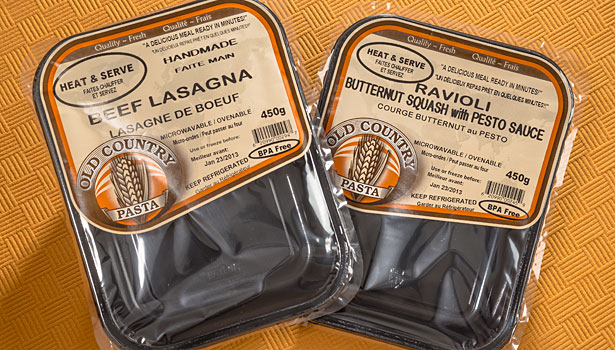(The National Provisioner) Consumers love the convenience of microwaveable heat-and-serve foods and the time saved in putting meals on the table. As a result, the U.S. market for microwaveable packaging is expected to achieve a 9.4 percent annual growth rate to generate $2 billion in revenue by 2016, according to a study1 by Allied Development Corp., Burnsville, Minn. Much of this growth will be fueled by the rapid adoption of microwaveable packaging for products with meat, poultry or seafood ingredients, including prepared meals, pasta and pizza.

Demand for microwaveable packaging is expanding elsewhere in the world too, according to a report2 by Global Industry Analysts Inc. (GIA), San Jose, Calif. In fact, the GIA study predicts, growing urbanization, changing lifestyles, smaller family sizes, increasing awareness about the benefits of nutrient-retaining packaging, widespread availability of microwaveable foods and increased penetration of microwave ovens will propel the global market for microwave packaging to $11.9 billion by 2018.
Microwaveable packaging helps microwaveable products meet demands for convenience. Options include microwave cooking bags, steam-generating containers and susceptor-equipped structures, which selectively direct microwave energy to optimize food heating/cooking.
Susceptor-equipped vacuum packaging for Bacon Microondas Espina inflates as four slices of bacon cook to perfect crispness in one minute. The pattern-metallized susceptor technology, chosen by Embotits Espina, a 102-year-old maker of cold cuts headquartered in Vic, Spain, was considered so innovative, the bacon package won Product of the Year honors in 2013 from the Association of International Metallizers, Coaters and Laminators (AIMCAL), Fort Mill, S.C. Members of the judging panel applauded the product’s combination of convenience, eye-catching appearance and functionality.
Another winner in AIMCAL’s 2013 competition exemplifies one of the growth areas for microwaveable packaging – prepared meals. The judging panel granted the Technical Award in the Food Packaging Category for the use of transparent barrier lidstock for refrigerated, heat-and-eat meals from Old Country Pasta, Port Coquitlam, B.C., Canada.
The aluminum-oxide-coated polyester barrier film seals to a crystallized polyethylene terephthalate tray to protect the shelf life of 12 heat-and-serve entrees, including Meat Lasagna and Chicken Herb Agnolotti with Sun-Dried Tomato Pesto (Made with Certified Organic Free-Range Chicken). A pressure-sensitive label applied to the lidstock identifies each stock keeping unit. The judges noted the combination of clarity, barrier and shelf life protection. “I like the idea that I can see the product I’m grabbing for a quick lunch,” commented one member of the judging panel.
Moving beyond reheating to cooking, microwave steaming technology reduces cooking time and generates uniform heat. Steaming-compatible formats include pouches, often equipped with customized venting features, or more complex dual-tray designs like the Steam Cooker™ package introduced in 2008 by ConAgra Foods, Inc., Omaha, Neb., for its Healthy Choice Café Steamers entrées. The Café Steamers line relies on a vented plastic tray, which holds frozen vegetables and meats above a tray of sauce. Recent additions include dishes like Honey Balsamic Chicken and Rosemary Chicken & Sweet Potatoes. The dual-tray arrangement is sealed with lidstock. A printed paperboard sleeve completes the package.
1 U.S. Microwaveable Packaging – 2012 to 2016. Allied Development Corp. Burnsville, MN. September 2012.
2 Microwave Packaging: A Global Strategic Business Report. Global Industry Analysts Inc., San Jose, CA. July 2013.